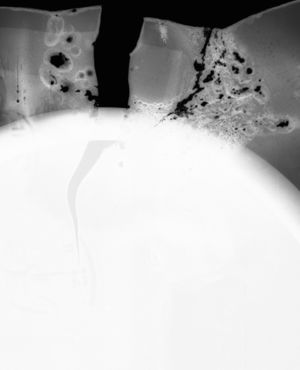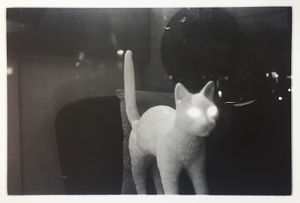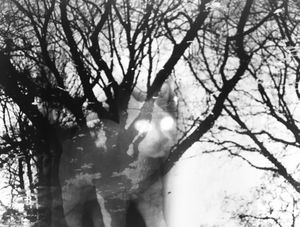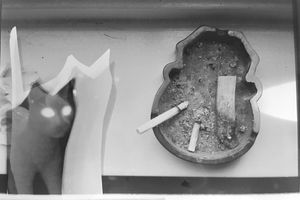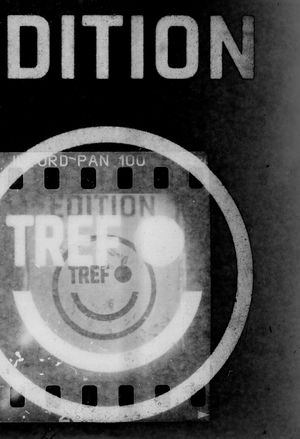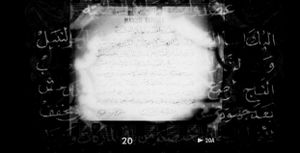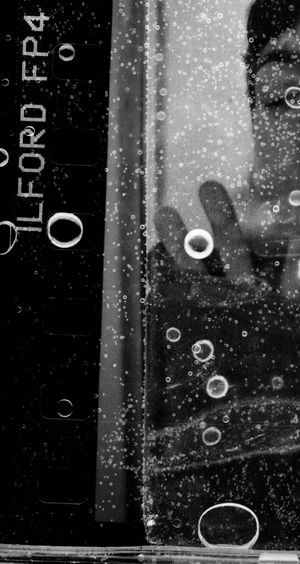Cem/textonmethodfinaldraft
TEXT ON METHOD (23.05)
The photograph, by itself, without any manipulation, is a signifier. It does not only depict a scene, but there is always an intention, something we can call (for now) humane. If it weren’t for an individual, or a group of individuals, the photograph wouldn’t exist to be seen. When we are looking at a photographic image, we are looking at a possibility, and a choice.
For the past months I have been searching different ways of creating non-conventional images. Through analog photography, using the film negatives, I have developed some methods in their creation.
There are two methods in my current practice; they are similar, but different. One is with the scanner, the other in the dark room. Considering the final outcome, one can be seen as digital, while the other is analog, but considering my physical approach to the image, using the negative itself, the method of creation is fully analog. There are certain limitations to every method, but it can be fun to play around with them.
My working method in the darkroom is producing images almost in an automated manner, especially in black and white darkroom, where the results are almost instantly visible, and you can alter the next version of the image according to the previous result. There has been many times where my initial expectation did not meet the resulting image, but this opens up the chance to improvise during the process; I think facing something unexpected grows my palette, shows new possibilities. Nevertheless, it definitely teaches me something new about the process that I did not know before.
The red light found in the darkroom does not affect the black and white photo paper as it is sensitive to only blue and green lights; therefore it is possible to see the negative image on the paper without exposing it, using a red filter lens in the enlarger. This helps when I am trying to build a composition, based on the reflected negative, while introducing new objects or new textures to it. This is something that is not possible in the color dark room, as the colored paper is also sensitive to red light, thus you work in pitch black. This weakens the precision when introducing physical objects to the composition.
In the scan practice there are less limitations, and more place to experiment. It is just the time that you lose when you have a failed experiment, not the photo paper, or the chemicals. The area you can work on is reduced to a certain surface; it is a 3D environment however it feels too 2D, as “the height” in the scanner is almost a centimeter. This results in limitation of the objects that I can use with the scanner apparatus. This limitation is evident in the current series I am working on using the scanner. The photographic images I am creating are based on the idea of coexistence of the film negative, and the object that is photographed. The object or group of objects accompanying the film negative has to be flat, or really small, so it won’t prevent the upper part of the scanner from closing, so that it can work. I don’t find this limitation to be frustrating, but more of a challenging thing. The best part of using the scanning method instead of analog printing is having more control over the layout.
Having a self reflective approach on my work has been the essential method. I previously mentioned that I was producing images in an automated way, in the aftermath of this is taking a look at all the images that I have created. After comparing them with each other, I compare them with my older work of the same medium to see if there is a pattern I can find.
This was also the way I created “transgross”, the photo book. Taking a look at my iPhone photo archive, the common theme of “photographs I find interesting but may cause other people to think I have mental issues so they should not be distributed in the world by any means” was quite salient: a dead cat, food gone wrong, a shit with a flower on top. Doing some curating and some mise en page, using a highly textured paper that has bits and pieces on its surface, I took this pattern and created a book, of which I like to think of as an art object. At the time I defined the book as an ejection, letting these images that were sleeping in a hard drive out, liberating them and also myself, from the burden of the uselessness of the images I loved and admired. A release.
This search for patterns in my work, in my actions, in my decisions, is the core of my method. That is how I work in the darkroom; that is how I function in life. I notice the recurring elements in my behavior, and that is how I define myself. The recurrence of a matter promotes its existence. The subjects that are recurring in my work that I have noticed are: the physicality, the usage of textures, and the action of releasing.
I’ve been told that my images look like archetypes. An archetype is a symbol; it signifies something that has been there for a long time. Often I do feel like I am in the search of an essence, a tiniest particle, an endpoint. The photographic image is made out of small particles, the grain, the silver halide crystals on the film, reacting to light, creating a physical copy of an instant. What I see in analog photography is that this aspect of photographic reality manifests itself within each photographic image, in a real transparent way.
My “archaic” material is film. The film negative is the origin of the all images I can create using it, making copies of it. It is a physical object, which can translate into other physical objects.
When the shutter is released, the image is captured, and the image that is captured is a possibility amongst other possibilities that are situated in camera apparatus’ program. The photographer’s job is to let these possibilities happen, to realize them. This kind of understanding seems to be diminishing the role of the photographer and unveils an illusion of the free will; all the images we make are already there. This is where my method finds its meaning. My intervention is now not limited to the instant of shutter release, but the film negatives are now tools that I use to make something else than a photograph. It’s not just the camera, but also the scanner and the darkroom are now my apparatuses. The images that I am making should not be considered as photographs, in a sense, they are closer to collages or drawings, and the photograph finds itself a place as a component. I am not only realizing a possibility, I am creating a new possibility. This is the way I revolt to the program of the photographic apparatus.

